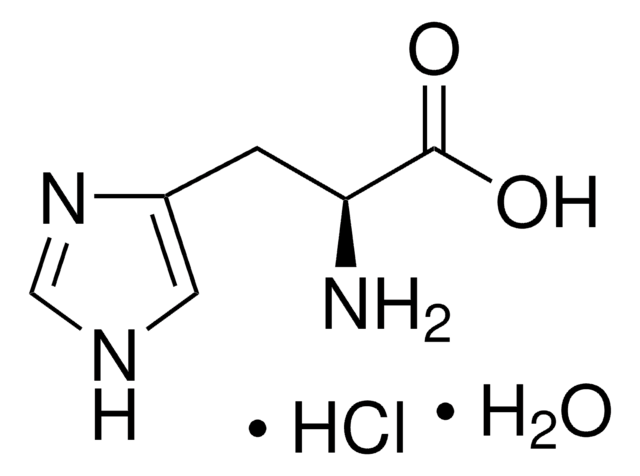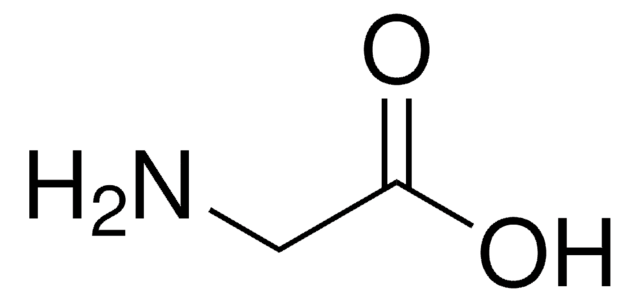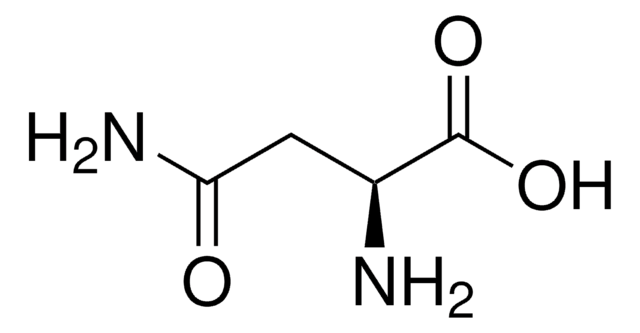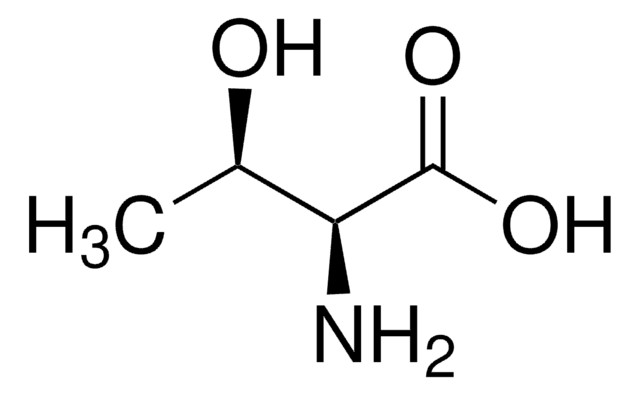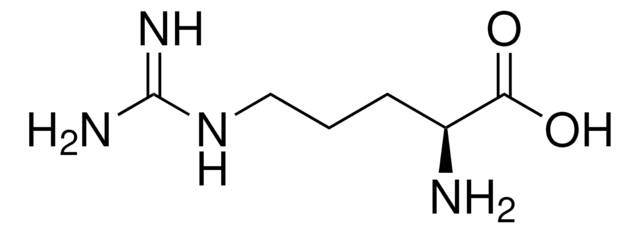11040
L-Arginine monohydrochloride
≥99.0% (AT)
Synonym(s):
(S)-(+)-2-Amino-5-[(aminoiminomethyl)amino]pentanoic acid monohydrochloride, (S)-(+)-Arginine hydrochloride
About This Item
Recommended Products
Assay
≥99.0% (AT)
optical activity
[α]20/D +22.0±0.5°, c = 5% in 5 M HCl
impurities
≤0.3% foreign amino acids
ign. residue
≤0.1% (as SO4)
loss
≤0.1% loss on drying
solubility
H2O: freely soluble
alcohol: slightly soluble (Hot)
anion traces
sulfate (SO42-): ≤50 mg/kg
cation traces
Ca: ≤10 mg/kg
Cd: ≤5 mg/kg
Co: ≤5 mg/kg
Cr: ≤5 mg/kg
Cu: ≤5 mg/kg
Fe: ≤5 mg/kg
K: ≤50 mg/kg
Mg: ≤5 mg/kg
Mn: ≤5 mg/kg
Na: ≤50 mg/kg
Ni: ≤5 mg/kg
Pb: ≤5 mg/kg
Zn: ≤5 mg/kg
SMILES string
Cl[H].N[C@@H](CCCNC(N)=N)C(O)=O
InChI
1S/C6H14N4O2.ClH/c7-4(5(11)12)2-1-3-10-6(8)9;/h4H,1-3,7H2,(H,11,12)(H4,8,9,10);1H/t4-;/m0./s1
InChI key
KWTQSFXGGICVPE-WCCKRBBISA-N
Looking for similar products? Visit Product Comparison Guide
Application
Biochem/physiol Actions
Storage Class Code
11 - Combustible Solids
WGK
WGK 1
Flash Point(F)
Not applicable
Flash Point(C)
Not applicable
Personal Protective Equipment
Regulatory Information
Choose from one of the most recent versions:
Already Own This Product?
Find documentation for the products that you have recently purchased in the Document Library.
Our team of scientists has experience in all areas of research including Life Science, Material Science, Chemical Synthesis, Chromatography, Analytical and many others.
Contact Technical Service